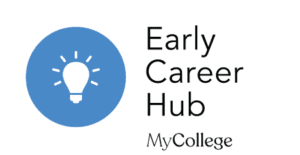Developing your curriculum design skills

One of the biggest changes in education in the last few years has been a shift of focus from pedagogy to curriculum. As a new teacher, it is increasingly important to understand the principles behind meaningful curriculum design, both for your own development and to empower you to take part in the conversation at a whole-school level.
If we take seriously the idea that ‘the curriculum defines the purposes of a school and the journey a school wants its pupils to take’ (Young et al., 2014) then every decision we make in school is a curricular decision. However, for the purposes of this article, I am considering the academic curriculum – the subjects taught – rather than the extended curriculum. Curriculum design requires you to read, think and question more than any other aspect of teaching. It is both the everything and the everyday. Here, I outline seven useful categories of curriculum design to guide your thinking.
Categories of curriculum design
1 Purpose
Ralph Tyler’s book Basic Principles of Curriculum and Instruction offers a useful set of questions for curriculum design, and his first is: ‘What educational purposes should a school seek to attain?’ (Tyler, 1949). A school curriculum must be designed with this question in mind, and also respond to the question, ‘What is the distinct purpose of each particular subject?’
I propose that there are four main schools of thought about the purpose of a school curriculum: to prepare pupils for the workplace, to build character, to further social justice and to teach knowledge for its own intrinsic value (Turner, 2016). Getting to grips with your view on each of these and their relative importance is essential, as they impact on curriculum decisions at a whole-school level and at the level of each individual subject.
For example, my research and work in the field of curriculum and assessment has persuaded me that the primary purpose of a school curriculum is to teach knowledge for its own intrinsic value (and that doing this will result in the other purposes being achieved). Consequently, when designing an English curriculum, I prioritised the study of canonical English literature, whereas a curriculum designer focusing on preparing pupils for the workplace might devote more time to writing linked to careers.
Whilst many schools would argue that they try to create a balance, the demands on time mean that schools are forced to prioritise, and it makes sense to do this in a purposeful way.
2 Principles
The next step is to ascertain what your curriculum principles are; these are the foundations on which your curriculum will stand. Take the following principles: a curriculum must provide access to the best of what has been thought and said; a curriculum must be centred around the premise that ‘learning […] is defined as a change in long-term memory’ (Kirschner et al., 2006); a curriculum must reflect both the substantive and disciplinary knowledge of the subject (the precise knowledge content that needs to be learnt and the way in which that knowledge is organised, discussed and used by the subject community).
These principles create questions that every teacher must then ask themselves, such as: What does the ‘best of what has been thought and said’ look like in my subject? How have I sequenced my curriculum to ensure that pupils will build schemata (mental models) of knowledge? What is the disciplinary and substantive knowledge in my subject, what is the appropriate balance between these two in the curriculum and how does this unfold in the way I teach?
Through these types of questions, we begin to make precise and deliberate choices about the curriculum.
3 Expectations
A curriculum must take care to fill gaps and build bridges for pupils, whilst continuing to aim to a higher ideal for all.
The ‘all’ is important here, as there is a danger of lowering expectations and curriculum demand for pupils with lower prior attainment, which often includes a larger proportion of pupils from disadvantaged backgrounds. Recent research on attainment groupingAlso known as ability grouping, the practice of grouping students according to measures of attainment suggests that two of the seven reasons as to why students in lower sets and streams have poorer outcomes are that ‘teacher expectations are lower for lower sets’ and that these students ‘are offered an impoverished curriculum and qualifications’ (Taylor et al., 2017).
Therefore, a key part of curriculum design is determining where the curriculum is heading: what does a pupil need to know and how do they need to apply this to achieve the status of a ‘scholar’ in your subject?
4 Big ideas
Once you have determined the heights that you want your pupils to reach, you have to consider how you will help them to get there, and this requires clarity about the building blocks of knowledge. If we think of the curriculum as ‘content structured as narrative over time’, which does two jobs: ‘making the next stage possible (a proximal function)’ and also ‘doing an enduring job (an ultimate function) which might come into its own later’ (Counsell, 2018), we begin to get a sense of why we must think about the curriculum as a whole. This requires you to consider the overall structure of your subject.
A useful exercise is to try to identify the overarching ideas and concepts of your subject. The most important action here is to look at the distinct features of your subject and begin to understand its narrative. Rhetoric is an important part of the English curriculum, dipping into both the substantive and disciplinary strands of the curriculum, and might therefore be considered a useful big idea or curricular title; within this, you might want to explore threshold concepts such as understanding that language is manipulated to gain power and that rhetoric comes from an ancient tradition that uses three appeals: pathos, ethos and logos. This is an example of how using a framework can help you begin to grasp the narrative of your subject, and therefore develop a coherent curriculum.
5 Content
Choosing content requires us to make precise decisions that reflect the specific demands of our subjects. In particular, it is useful to make content selections based on how we develop schemata of knowledge, but it is our subject disciplines that ultimately determine what the expert schema of a subject specialist (teacher) might look like and the types of content that help build these schemata in the mind of a novice (pupil).
This tricky content choice is often more difficult in a subject where knowledge builds cumulatively rather than hierarchically. In subjects such as maths, which have a clear hierarchical structure, there is often less debate about content as there are core components of knowledge that you must know in order to be able to progress within the subject; it would be hard to argue for a maths curriculum that didn’t include algebra or place value. In English, which is more cumulative, there is more of an argument about which content is essential. Even in areas where there is much agreement, such as the study of Shakespeare, choosing between his plays is more open to question – why King Lear rather than Hamlet? However, having a clear set of curriculum principles means that you have useful boundaries for content choices.
6 Sequencing
We select content because it is important, so we clearly want pupils to remember this knowledge! The way in which we structure material over time is integral to helping pupils reach security and fluency but is again dependent on the subject. More hierarchical subjects, such as languages, maths and the sciences, require taking each piece of component knowledge and determining what knowledge is required to access it and which concepts it builds towards. However, even more typically cumulative subjects have aspects that are hierarchical: in art we can see that grasping pointillism would require a knowledge of impressionism; in primary geography, a knowledge of the rivers of Britain requires knowing the geography of Britain, such as the fact that Britain is a country that is made up of counties.
Alongside this, we must factor in research that indicates that pupils learn by transferring information from working to long-term memory and that using spaced practice, interleavingAn approach to learning where, rather than focusing on one piece of content at a time (known as blocking) then moving on to the next, students alternate between related concepts of material and opportunities for retrieval all support this learning (Deans for Impact, 2015). Clearly this has implications for the way we would want to structure the curriculum.
7 Review
Finally, one of the most important aspects of curriculum design is to remember that it is a process that requires review. It is through measured and deliberate conversations within a subject community that we stand the best chance of creating a stimulating, imaginative, rigorous and enriching curriculum.
KEY TAKEAWAYS
|










